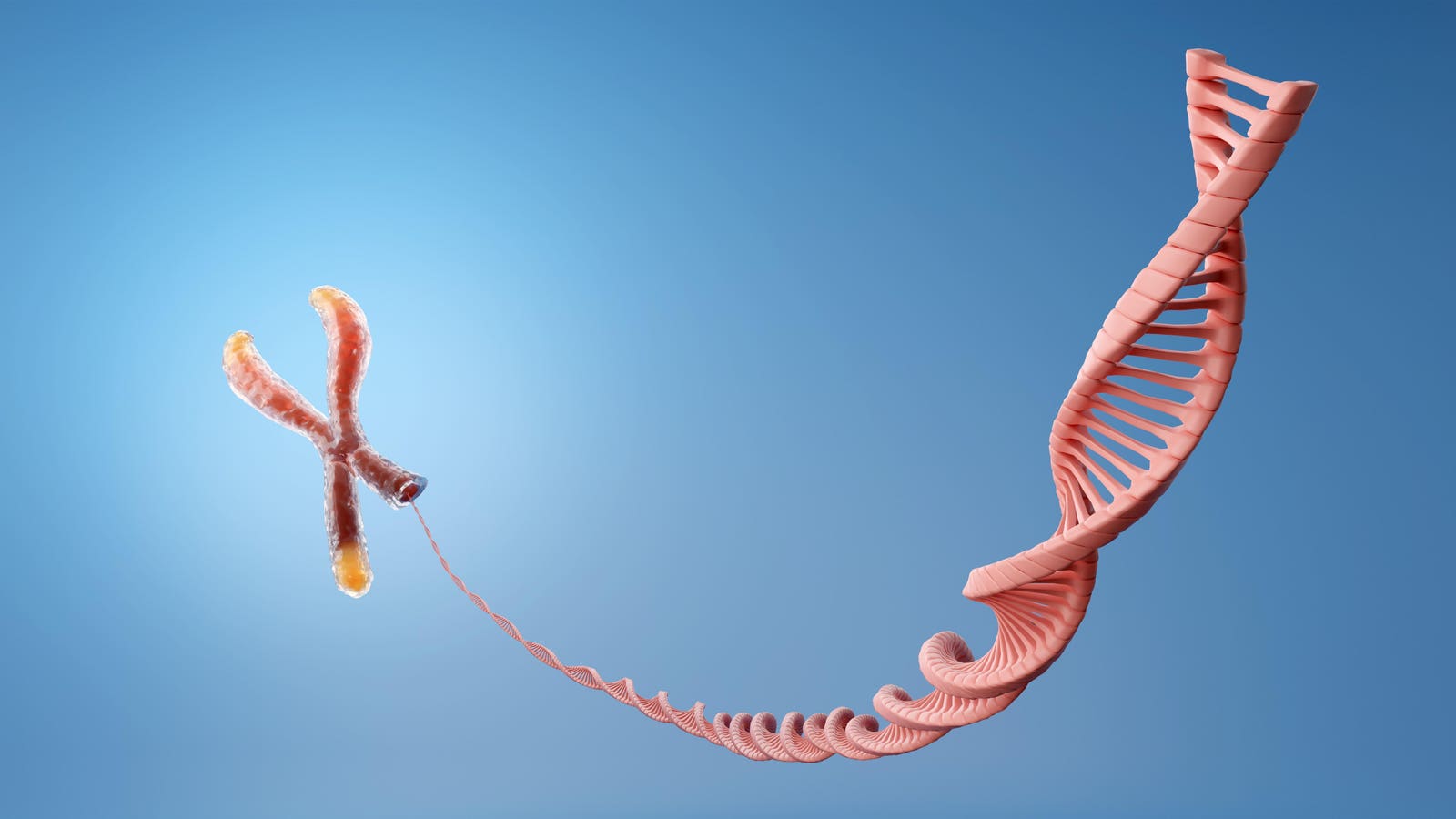Health
Not all telomeres are the same

telomere chromosome and dna spiral on blue background 3D rendering.
Telomeres, the protective caps at the ends of our chromosomes, are much like the plastic ends of shoelaces, preventing our DNA from fraying and preserving genetic integrity. However, as cells divide, these telomeres shorten, ultimately leading to cellular aging and dysfunction. This link between telomere length and aging has made them a focal point in longevity research.
A groundbreaking one study recently published in Science has added a new layer to our understanding of telomeres. The research shows that telomere length varies significantly from chromosome to chromosome, a discovery that applies to different individuals. This nuanced understanding could lead to more sophisticated models of aging and better strategies to combat age-related decline.
The study in focus
The study, led by a team of geneticists and biologists, analyzed telomere length across all 23 pairs of chromosomes in a diverse group of individuals. Using advanced sequencing technology and advanced computer methods, the researchers painstakingly measured telomeres, revealing a surprising pattern: not all telomeres are equal. Some chromosomes consistently had longer telomeres than others, regardless of the individual’s total telomere length or age.
On average, the average telomere length was 4.6 kilobases (kb), which is a measure of the size of DNA sequences, where one kilobase is equal to 1,000 base pairs of DNA. However, the study found that telomere lengths on specific chromosomes varied widely. For example, the telomeres on the short arm of chromosome 1 (1p) differed by more than six kilobases between the two parts, 1pM and 1pP – the maternal (M) and paternal (P) chromosomes, respectively. This discrepancy highlights the complexity and variability in telomere length across different chromosomes.
Why is this important?
Understanding that telomere length varies between chromosomes is more than just a scientific curiosity. It opens up new avenues for research and potential therapeutic strategies. Different chromosomes carry different genes, and variation in telomere length can affect how these genes are protected and expressed. For example, chromosomes with shorter telomeres may be more susceptible to damage and may affect cellular function differently than chromosomes with longer telomeres.
Moreover, this variation is promising for predicting and preventing diseases. Telomere length has already been linked to several age-related diseases, such as cancer and cardiovascular disease. By identifying which chromosomes have shorter telomeres, scientists may be able to determine which parts of our genome are particularly vulnerable to age-related degradation, allowing for more targeted prevention and treatment strategies.
The biological puzzle
The variation in telomere length across chromosomes raises some major questions. First, why do some chromosomes have longer telomeres than others? Is this variation influenced by genetic factors, environmental factors, or a combination of both? The study suggests that while genetic factors play a role, the environment also has a significant influence on telomere dynamics.
For example, stress, diet and exposure to toxins are known to affect telomere length. It is possible that these factors may differentially affect telomeres on particular chromosomes, leading to the observed variation. Further research is needed to unravel these complex interactions and fully understand the underlying mechanisms.
Implications for aging research
The findings of this study challenge the traditional view of telomere biology and aging. Instead of a uniform shortening of telomeres across all chromosomes, we now know that each chromosome has its unique telomere landscape.
Future studies could investigate whether interventions known to extend telomere length, such as lifestyle changes, certain medications, or even experimental treatments such as telomerase activation, have differential effects on specific chromosomes. Such research could help refine these interventions, making them more effective and targeted.
A future of possibilities
The discovery that telomere length varies from chromosome to chromosome marks an important milestone in aging research. It highlights the complexity of our genetic makeup and the intricate ways in which our bodies age.
Although this research is still in its early stages, its implications are profound. By continuing to investigate the relationship between telomeres and aging, scientists are paving the way for a future where we can better predict, prevent and treat age-related diseases. As we continue to explore this fascinating field, one thing is clear: telomeres hold many more secrets, and unlocking them could revolutionize the way we approach aging and longevity.

